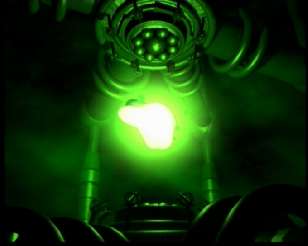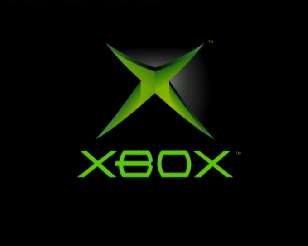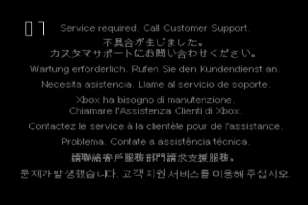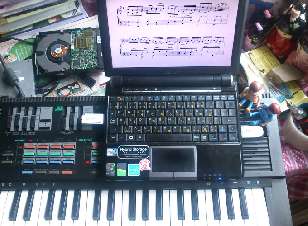Rick's b.log - 2012/04/26
You are 3.144.123.24, pleased to meet you!
Rick's b.log - 2012/04/26 |
|
| It is the 21st of November 2024 You are 3.144.123.24, pleased to meet you! |
|
mailto: blog -at- heyrick -dot- eu
Yes. €1.
I didn't actually expect it to work.
When I got home, I discovered the two bundled joysticks were not XBOX ones. I had a clone PS2 joystick (useful as a spare) and a cut-down sort-of PS1 style with a USB plug - maybe this is for PC gaming?
The XBOX itself started, astonishingly, displaying an animation:
After some moments of quiet contemplation, the display reports an error message. But being Microsoft, it switches to NTSC to display:
That means the unit timed out waiting for the harddisc. So I opened the thing up and popped in a different drive. The error number changed to be "05" because drives and motherboards are paired. Bloody games consoles.
Now, this is not insurmountable. A "modchip" can be fitted to work around this, and there's a version of Linux to run on the thing. But... given that a $35 RaspberryPi can probably come close to the capabilities of an XBOX, the question is "should I bother"? I'm thinking not. Suggestions? If anybody wants it for the cost of postage (it is heavy!), mail me...
Now, here's a look inside:
While I knew Microsoft made a "console", I never appreciated that it was basically a messed-about reworking of a traditional PC. The processor is a type of PentiumIII clocking something like 733MHz (that's the one with the really big heatsink), and the GPU is a type of nVidea chip. The joystick ports are modified USB 1.1. The harddisc is a standard quiet ATA harddisc, and the DVD-ROM is a generic 5.25" ATAPI unit. End result? It is BIG and HEAVY.
Perhaps only Microsoft would have been audacious enough to try to build a console from reworked commodity PC parts? It is, however, a gamble that may well have paid off. Released shortly after the PlayStation2 and around the time of the GameCube (in other words, 2001ish), the processor clocked twice the GameCube and two and a half that of the PS2. Not only that, but while the PS2 weighs in with a 147MHz GPU, the GameCube offers 162MHz, while the XBOX storms ahead with 233MHz. You can't directly compare technologies on raw clock speed, but what you can say is that the XBOX has all it needs to generate impressive displays. This is aided also by the 64MiB onboard memory (PS2 - 32MiB, GC - 40MiB). All in all, on technical merit, it had a fair bit of potential. Audacious? Yes. But also pretty smart looking at it.
This sort:
Being from the late '80s, it offers the usual range of things - single finger chording, a variety of rhythms, and various "voices". It also has a few of its own touches, for example you can add stuff to the default rhythm (although you cannot unfortunately create your own programmed rhythms) and the rhythms have a separate volume control.
As for me, I did GCSE Music and was able to read basic notation (though I preferred to memorise how to play instead of trying to read music on the fly). I think I'll need to get a book and play around, as this was some twenty two (aaaargh!) years ago. Forgive me forgetting.
Here's a video to give you an idea:
XBOX
At a vide grenier on Sunday, I picked up an XBOX for €1.




Unfortunately, it seems - from a brief wander online - that the XBOX wasn't the most reliable thing around.
Keyboard
For a fiver I also picked up a keyboard. No, not a Japanese keyboard... well, yes, it was Japanese but not that sort of keyboard.

The default 'sounds' are kinda laughable in a very electronic-keyboard kind of way (though I quite like the Koto). Sounds are generated by FM wave synthesis, as opposed to samples. This means the instrument's price can be kept down, as samples carry their own problems (for a decent keyboard, you can't just play a sample at different pitches as things behave differently - consider the sustain on the lowest note of a piano as opposed to the highest note).
There is, however, one winning feature. This is the sliders on the upper right that offer controls over the sound generator. The first slider offers five different "waves", the next, five levels of spectrum (pitch), then five levels of modulation ('brightness'), five levels of attack (how quickly the sound reaches its peak), and finally five levels of decay (the duration of fade-out). To give you an idea, a piano has an instant attack with a long decay, while a mute horn has a low attack with no decay at all.
Using just five controls with five options offers you the possibility of around 3000 different sounds. The keys are rather small, I have the feeling this was aimed more at being a better class of toy than an actual electronic instrument, however the range of available sounds transcends everything else. Sure, those who don't like synthesis will hate this. However those who don't freak out would enjoy the opportunities presented.
Rob, 27th April 2012, 21:52
I've got three of them set up here, and a fourth spare. It's pretty easy to soft-mod them, rather than using a chip, assuming you can find the original version of Splinter Cell (not hard) or several other games. Not sure how to get the hdd working first though.
The controllers are USB, just using a different connector.
| © 2012 Rick Murray |
This web page is licenced for your personal, private, non-commercial use only. No automated processing by advertising systems is permitted. RIPA notice: No consent is given for interception of page transmission. |